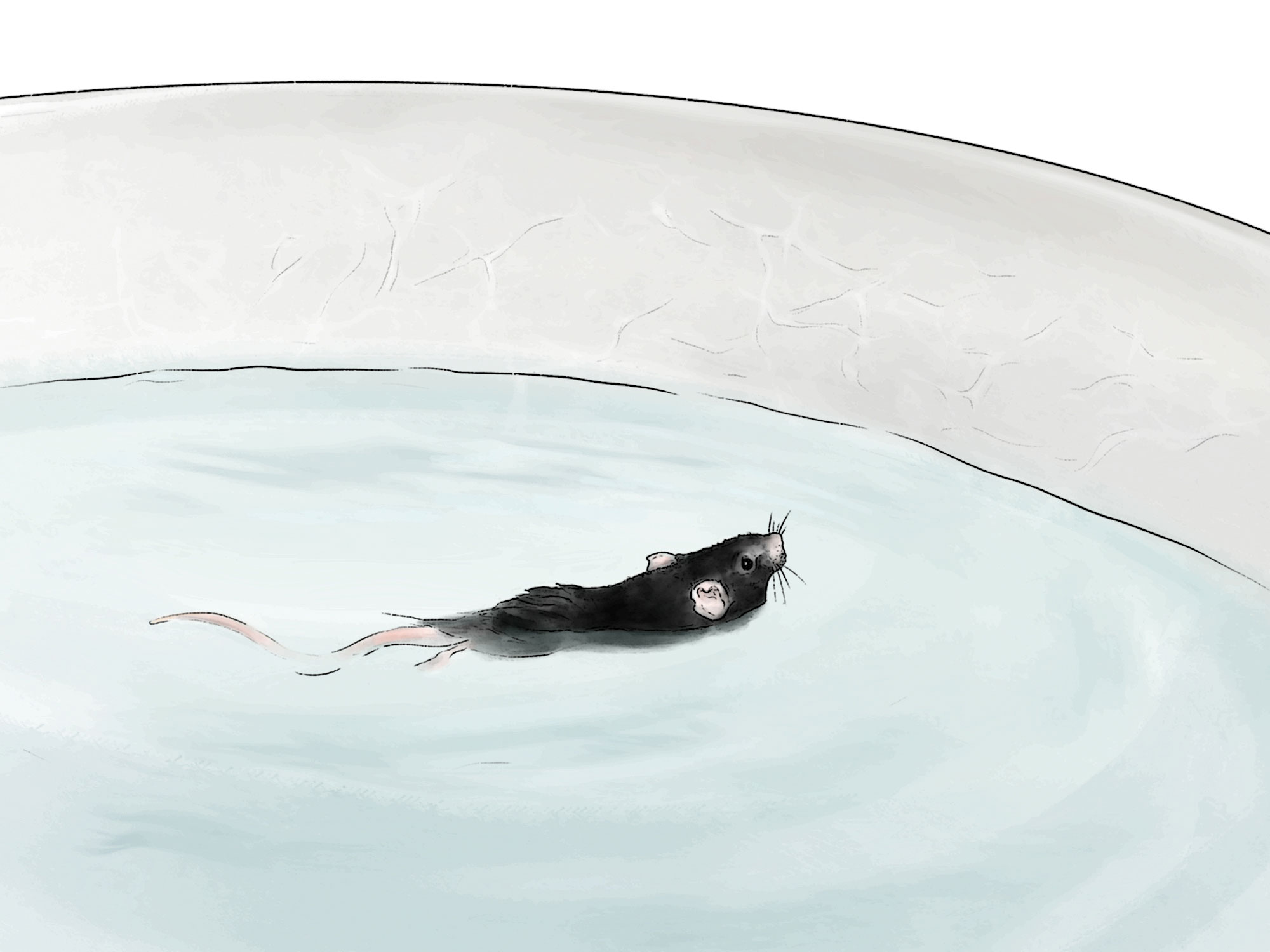The Morris water maze (MWM) is a spatial learning and memory test widely used in rodents. Extensive evidence confirms its validity as a measure of hippocampus-dependent spatial navigation and reference memory, making it a suitable test to assess the consequences of pharmacological and nutritional interventions in Alzheimer´s disease models, such as APPSL, 5xFAD, and scopolamine treatment. This test has a high translational value as similar outcomes are observed in rats, mice, and humans tested in a virtual maze.
The testing apparatus consists of an open circular pool filled with water in which a transparent escape platform is located on a predetermined location. Since the platform is transparent and submerged, animals cannot use the platform for navigation. Therefore, they are forced to use the surrounding spatial cues to determine their position and navigate towards the platform to escape the water. Our standard protocol spans over five days and is divided into two parts: four acquisition days and the probe trial day. First, four trials with a maximum duration of 60 seconds are performed on four consecutive days. The starting position changes with each trial and animals never start in the quadrant where the platform is located. Once the animal finds the platform, the trial is automatically stopped. Alternatively, if the animal cannot find the platform, the experimenter places the animal on the platform and allows it to observe the environment for 10-15 seconds.
On the fifth day, the platform is removed, and animals are tested in the probe trial for 60 seconds. Computerized video tracking system is used for the quantification of the observed parameters.
The “reversal learning paradigm” can be added to the protocol, where the location of the platform is changed after the probe trial and the standard protocol is then repeated. Reversal learning in the MWM reveals whether animals can re-learn the position of the platform and acquire a new direct path to the new goal position.
The MWM is useful to test spatial memory in cognitive rodent models such as of Alzheimer’s disease. The reversal learning paradigm is of special interest for the evaluation of Huntington disease and schizophrenia models.


Figure: Assessment of spatial learning of APPSL transgenic mice. MWM learning curves showing distance traversed and escape latencies during 4 testing days of 6 (A, D), 9 (B, E) and 12 month (C, F) old animals. 6 month old APPSL n = 19, ntg n = 21; 9 month old APPSL n = 21, ntg n = 19; 12 month old APPSL n = 13, ntg n = 22. Two-way ANOVA with Bonferroni‘s post hoc test compared to ntg. *p<0.05; **p<0.01; ***p<0.001.
